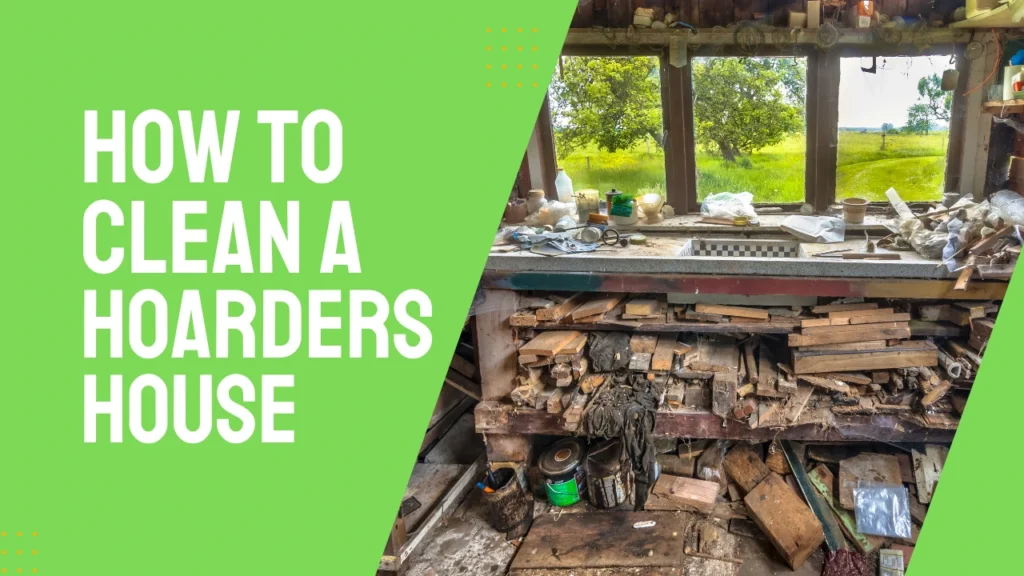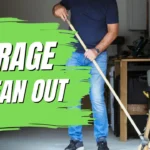Cleaning a hoarder’s house isn’t just about tidying up—it’s a journey of compassion, strategy, and mental wellness. If you’re overwhelmed by the task or helping someone in need, this guide covers everything from understanding hoarding behavior to executing a successful cleanup with dignity.
What is Hoarding Disorder?
Hoarding disorder is a mental health condition where individuals excessively accumulate items and experience anxiety at the thought of discarding them.
Common Signs of Hoarding:
- Unusable rooms due to clutter
- Difficulty throwing away even worthless items
- Emotional distress when parting with belongings
Mental Health Impact
Hoarding is often associated with:
- Anxiety
- Depression
- Obsessive-compulsive disorder (OCD)
Why Cleaning a Hoarder’s House is Important
Health Hazards
Unclean living conditions can lead to:
- Mold
- Bacterial infections
- Respiratory issues due to dust and pet dander
Fire and Safety Risks
Blocked exits and flammable clutter increase the risk of house fires and injuries.
Step 1 – Assess the Situation
Before diving into the mess, analyze the severity.
Levels of Hoarding:
- Level 1: Mild clutter, all rooms accessible
- Level 5: Severe filth, structural damage, infestations
Involve the Right People
- Family members
- Mental health professionals
- Social workers
Step 2 – Prepare Supplies
A successful hoarding clean-up begins with proper tools.
Cleaning Checklist:
- Trash bags
- Disinfectants
- Gloves and masks
- Organizing bins
Safety Equipment:
- HEPA vacuums
- Respirators
- Biohazard suits (for extreme cases)
Step 3 – Create a Decluttering Plan
Start with the least contaminated areas like the bathroom. Prioritize one room at a time to avoid overwhelm.
Room-by-Room Strategy:
- Bathroom → Kitchen → Living Room → Bedroom → Basement/Garage
Time Management Tips:
- Set daily goals
- Schedule breaks to prevent burnout
Step 4 – Sort and Categorize Items
Use the 4-box method:
- Keep
- Donate
- Trash
- Recycle
Tips for Difficult Decisions:
- Ask: “When was the last time this was used?”
- Set sentimental limits (e.g., keep 5 photos, not 500)
Step 5 – Remove Trash and Biohazards
This is where cleaning gets serious.
Safe Disposal Techniques:
- Contact local waste management
- Use dumpsters for bulk removal
Dealing with Mold, Pests, and Waste:
- Spray disinfectants
- Hire pest control
- Remove soiled carpets and furniture
Step 6 – Deep Clean the Home
After decluttering, thoroughly clean the house.
Focus Areas:
- Walls, ceilings, baseboards
- Kitchen appliances
- Bathrooms (toilets, tiles, sinks)
- Upholstery and carpets
Air Quality and Odor Control:
- Use HEPA air purifiers
- Vinegar + baking soda for natural deodorizing
Step 7 – Organize the Remaining Items
Storage solutions:
- Label containers
- Install wall shelves
- Use under-bed bins
Step 8 – Emotional Support and Aftercare
Offer reassurance to the hoarder.
- Encourage therapy or counseling
- Validate their feelings without judgment
- Celebrate small victories
Step 9 – Prevent Relapse and Maintain Cleanliness
- Create a cleaning schedule
- Practice the “one-in, one-out” rule
- Host monthly check-ins or clean-up days
When to Hire a Professional Hoarding Cleanup Service
You should hire professionals if:
- There’s structural damage
- You’re dealing with biohazards
- The emotional toll is too great
Look for certified hoarder cleaning companies with mental health experience.
FAQs about Hoarder House Cleaning
Q: How long does it take to clean a hoarder’s house?
A: It depends on the severity. It may take a few days to several weeks.
Q: Can you clean a hoarder’s house without their permission?
A: Not ethically or legally in most cases. Always seek consent unless it’s an emergency.
Q: How much does it cost to clean a hoarder house?
A: Costs range from $1,000 to $10,000+ depending on cleanup level and services needed.
Q: What should I do with valuable items found?
A: Set aside anything of value and discuss it with the owner. Don’t discard valuables without consent.
Final Thoughts
Cleaning a hoarder’s house is more than just removing clutter—it’s about restoring dignity and creating a livable, safe space. Whether you’re tackling the project yourself or seeking professional help, remember: every small step counts.











